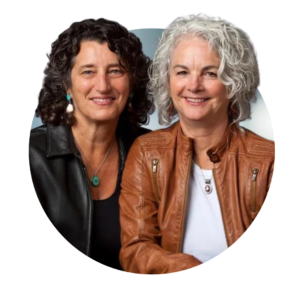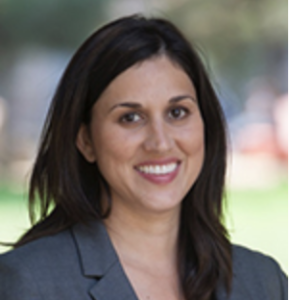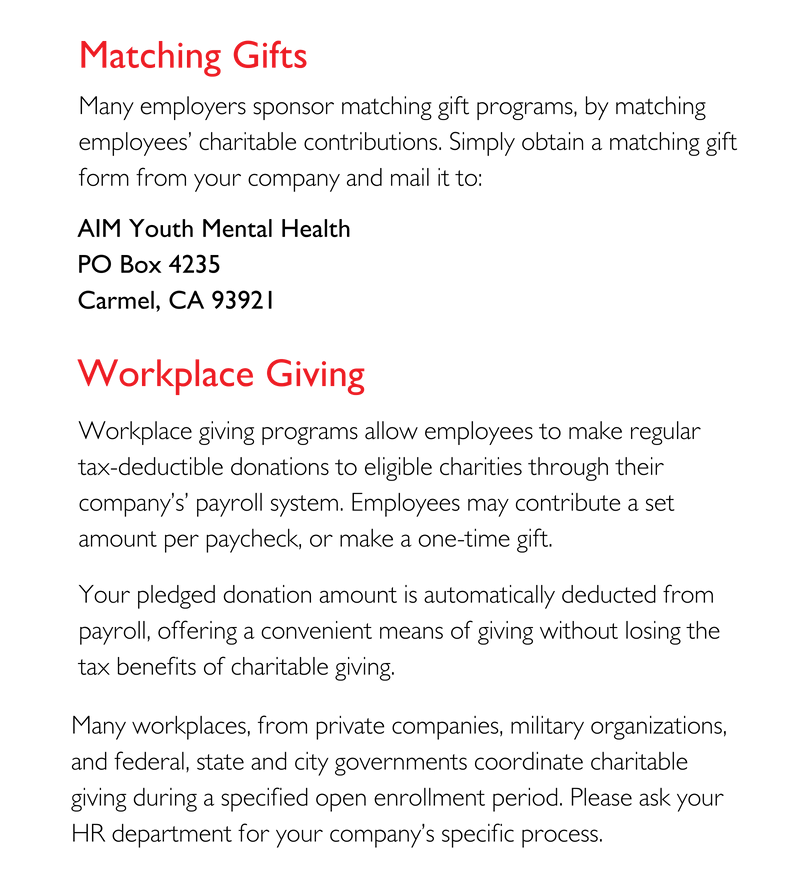SAN JOSE — Fewer high school students are drinking, having sex, doing drugs and resorting to violence, a large-scale survey of Santa Clara County public school students shows. At the same time, engagement in school has plunged, as has students’ optimism about their future.
This mixed picture of youth well-being emerges in Project Cornerstone’s Silicon Valley youth survey — the first in six years — of 43,000 youths at more than 180 elementary, middle and high schools in Santa Clara County. The survey was administered last fall, and the results were released this spring.
“There are a lot of positives, but kids are telling us they’re bored in school,” said Anne Ehresman, executive director of Project Cornerstone, about the high school results. “That breaks my heart.”
The group, an initiative of the YMCA Silicon Valley, works with schools and other groups to help youngsters thrive. The survey examines 40 “developmental assets” — external and internal factors like family support, safety, adult role models, youth programs and behavior — to gauge the strength and well-being of young people.
Cornerstone cites research showing that the more such assets youth have, the more likely they’ll choose beneficial activities, succeed in school and avoid risky behavior.
Among high school students, the drop in school engagement was striking. It fell to 38 percent — compared with 66 percent in 2010, the last time Project Cornerstone conducted its survey.
It’s a curious statistic, since more students report earning high grades and believe it’s important to do their best, even when they don’t like the assignment.
Why is high school so unappealing? It may be partly due to teachers who are too busy to give individual attention or are stuck in traditional lecture mode, which students said they find boring. What’s important are “teachers that are able to engage our minds and also our hearts,” said Victoria Huynh, a senior at Milpitas High, one of about 30 high schools who participated in last year’s survey.
She’s been lucky: Huynh rates highly most of the teachers she’s had since kindergarten. But as a leader of the student service club Interact, she’s heard from peers throughout the Bay Area who acutely feel that their teachers value them mostly for their test scores and performance.
Just 34 percent of high school students say they experience a “caring school climate.” Even fewer report positive family communication, parent involvement in schools and a caring neighborhood.
Just 17 percent feel that their community cares about them.
“I know our community leaders really care about kids, but kids are not seeing it and feeling it,” said Ehresman.
Yet students appear to be navigating the world even better than they did six years ago. High school students report a significant drop in violence, vandalism and shoplifting, as well as in sex and drinking since 2010.
Nine percent say they got into trouble with the law, down from 19 percent previously. Being a victim of physical abuse dropped from 23 to 17 percent, attending drinking parties fell from 43 to 29 percent, and having sex dropped from 21 to 14 percent.
Ehresman attributes those improved scores to a countywide focus on supporting students — through quality after-school programs, initiatives of the San Jose Mayor’s Gang Task Force, and intervention with struggling kids. She also credits schools backing away from suspensions and expulsions, adding mindfulness — a type of meditation — to the day and teaching conflict-resolution skills.
In two decades, Project Cornerstone has worked with hundreds of schools, focusing on a positive school climate in mostly elementary and middle schools. Many current high school students benefited from those programs, Ehresman said. It has 215 partner schools training students to have a more active voice on campus and providing more peer-support programs.”]
“There’s been an overall lift, not just with kids who are high risk, but all kids,” Ehresman said.
With the increased economic stresses on low- and middle-income families in the pricey Bay Area, it appears students rely not on family but peers as a source of positive influence.
Especially in immigrant families, where parents are busy working, students are launched on their own at an early age. Huynh, whose parents came from Cambodia and Vietnam, said adults have sacrificed to get here and set up life. “They expect us to know that their role is to support the family, and our job is to seek an education — in place of what they could not do.”
Whatever the cause, something is exacting a toll on young people. Self-harming behaviors and signs are up — marginally and not statistically significant, but still concerning. Among high school students, 13 percent report attempting to kill themselves, 16 percent have an eating disorder and 19 percent have signs of depression. Optimism about their future dropped six points, to 64 percent.
Those rates are significantly worse for LGBTQ students. For the first time, Project Cornerstone reported results for lesbian, gay and bisexual students.
Signs of stress don’t surprise Huynh. She said the hyper-competitive environment of high school makes some kids feel as if whatever they do, it’s not enough — to earn the grade, top the rankings or get into the “right” college.”
On the Project Cornerstone 2016 surveys, elementary school students post the best scores among age groups: 77 percent have enough assets that help them succeed. Twenty percent are considered “vulnerable” and 3 percent “at risk,” meaning that they lack the support and conditions to fare well.
Middle school and high school students are less well off: 54 percent are optimal or adequate, 40 percent vulnerable and 6 percent at risk. But high school students also post the highest gains.
The Santa Clara County Office of Education underwrote the $165,000 cost of the survey. School districts paid for their own reports.
Ehresman said that despite encouraging findings, there’s clearly work to be done. “We need to think about how we can connect with youth in ways that are more caring and positive.”
Read the original article in full on Mercury News.


















 Moving Upstream: A Proactive Approach to Addressing Behaviors and Bullying
Moving Upstream: A Proactive Approach to Addressing Behaviors and Bullying Krista Reuther is the Assistant Director of Ohana’s Community Health and Prevention Program. She received her Masters in Public Health and Social Work at UC Berkeley. She comes to this position after 14 years of clinical social work experience at Stanford Children’s Hospital in pediatric oncology, critical care, and bereavement. Her goal is to reduce the incidence of mental illness in children and adolescents in Monterey County.
Krista Reuther is the Assistant Director of Ohana’s Community Health and Prevention Program. She received her Masters in Public Health and Social Work at UC Berkeley. She comes to this position after 14 years of clinical social work experience at Stanford Children’s Hospital in pediatric oncology, critical care, and bereavement. Her goal is to reduce the incidence of mental illness in children and adolescents in Monterey County. Dr. Guss is a 35-year veteran educator with a doctorate degree in Educational Leadership. She served as a classroom teacher for 10 years, including two years as a teacher in a bilingual program in South Central Los Angeles. She has also served as a college professor, mentor teacher for new teachers, and a master teacher for teacher candidates completing their student teaching experience. She continues to be a strong advocate for the teaching profession.
Dr. Guss is a 35-year veteran educator with a doctorate degree in Educational Leadership. She served as a classroom teacher for 10 years, including two years as a teacher in a bilingual program in South Central Los Angeles. She has also served as a college professor, mentor teacher for new teachers, and a master teacher for teacher candidates completing their student teaching experience. She continues to be a strong advocate for the teaching profession. Fellowship: Stanford University School of Medicine (1994) CA
Fellowship: Stanford University School of Medicine (1994) CA Michael G. Thompson, Ph.D. is a consultant, author and psychologist specializing in children and families. He is the supervising psychologist for the Belmont Hill School and has worked in more than seven hundred schools across the United States, as well as in international schools in Central America, Europe, Africa and Asia.
Michael G. Thompson, Ph.D. is a consultant, author and psychologist specializing in children and families. He is the supervising psychologist for the Belmont Hill School and has worked in more than seven hundred schools across the United States, as well as in international schools in Central America, Europe, Africa and Asia.
 is 15 years old and a sophomore at Marina High School in Marina, CA. Her academic interests include math, history, and psychology. She joined the AIM Ideas Lab in 2021 because she wanted to be a part of something that could have a great impact on her community. Marwa is interested in youth mental health because she has always been fascinated with the human mind and she wants to support those that are suffering who may feel like their challenges in life aren’t important enough or are too afraid to seek necessary help.
is 15 years old and a sophomore at Marina High School in Marina, CA. Her academic interests include math, history, and psychology. She joined the AIM Ideas Lab in 2021 because she wanted to be a part of something that could have a great impact on her community. Marwa is interested in youth mental health because she has always been fascinated with the human mind and she wants to support those that are suffering who may feel like their challenges in life aren’t important enough or are too afraid to seek necessary help. Giovanna Panetta is a 16 year old junior at Carmel High School. She has always been called to STEM subjects, specifically biology. The AIM Ideas Lab instantly attracted her attention as a research opportunity. Gia has always comprehended the importance of mental health. She knows that COVID only exacerbated previously existing problems, and that as a community we can try and find the root of those problems. Mental health is an integral part of life, and can impede a body’s ability to be healthy. She strongly believes that life is worth living, and she wants to help anyone that thinks otherwise.
Giovanna Panetta is a 16 year old junior at Carmel High School. She has always been called to STEM subjects, specifically biology. The AIM Ideas Lab instantly attracted her attention as a research opportunity. Gia has always comprehended the importance of mental health. She knows that COVID only exacerbated previously existing problems, and that as a community we can try and find the root of those problems. Mental health is an integral part of life, and can impede a body’s ability to be healthy. She strongly believes that life is worth living, and she wants to help anyone that thinks otherwise. Dr. Friedman completed her undergraduate degree in Psychology from University of California San Diego (UCSD). She went on to complete her masters and doctorate degrees (Ph.D.) in Clinical Psychology from Rosalind Franklin University of Medicine and Science/Chicago Medical School. Dr. Friedman completed her pre-doctoral internship at Rush University Medical Center, Chicago, IL, and her post-doctoral fellowship training at the VA San Diego Healthcare System. Her clinical training and experience has been focused primarily on comprehensive assessment and effective treatments for anxiety, mood and related disorders. Dr. Friedman has extensive experience in providing Cognitive Behavioral Therapies for anxiety disorders (e.g. worry, OCD, social anxiety, phobias and PTSD), depression, adjustment disorders/life stress, insomnia and body-focused repetitive behaviors (e.g. Trichotillomania and skin picking). She has received training in evidence-based interventions for a variety of specific problems, including exposure with response prevention (ERP) for treatment of OCD, Prolonged Exposure (PE) for treatment of PTSD, and Cognitive Behavioral Therapy for Insomnia (CBT-I). Moreover, she has specialty training in the treatment of childhood anxiety and related disorders, such as ADHD, selective mutism, separation anxiety, PTSD, depression and specific phobias. In addition, Dr. Friedman has developed an expertise in research on Trichotillomania and body-focused repetitive behaviors, which has led to numerous local and national presentations. Dr. Friedman regularly attends local and national conferences, training seminars and workshops in order to stay informed on the most up to date treatments and apply state of the art science into her clinical practice.
Dr. Friedman completed her undergraduate degree in Psychology from University of California San Diego (UCSD). She went on to complete her masters and doctorate degrees (Ph.D.) in Clinical Psychology from Rosalind Franklin University of Medicine and Science/Chicago Medical School. Dr. Friedman completed her pre-doctoral internship at Rush University Medical Center, Chicago, IL, and her post-doctoral fellowship training at the VA San Diego Healthcare System. Her clinical training and experience has been focused primarily on comprehensive assessment and effective treatments for anxiety, mood and related disorders. Dr. Friedman has extensive experience in providing Cognitive Behavioral Therapies for anxiety disorders (e.g. worry, OCD, social anxiety, phobias and PTSD), depression, adjustment disorders/life stress, insomnia and body-focused repetitive behaviors (e.g. Trichotillomania and skin picking). She has received training in evidence-based interventions for a variety of specific problems, including exposure with response prevention (ERP) for treatment of OCD, Prolonged Exposure (PE) for treatment of PTSD, and Cognitive Behavioral Therapy for Insomnia (CBT-I). Moreover, she has specialty training in the treatment of childhood anxiety and related disorders, such as ADHD, selective mutism, separation anxiety, PTSD, depression and specific phobias. In addition, Dr. Friedman has developed an expertise in research on Trichotillomania and body-focused repetitive behaviors, which has led to numerous local and national presentations. Dr. Friedman regularly attends local and national conferences, training seminars and workshops in order to stay informed on the most up to date treatments and apply state of the art science into her clinical practice. Dr. Piacentini is a board-certified clinical child and adolescent psychologist and Professor in the UCLA Department of Psychiatry and Biobehavioral Sciences. He directs the UCLA Child OCD, Anxiety, and Tic Disorders Clinic and Tourette Association Center of Excellence which provide diagnostic evaluation and treatment (both therapy and medication) for youth with the above problems. He also directs the UCLA Center for Child Anxiety Resilence, Education, and Support (CARES; carescenter.ucla.edu) which provides education and programming to parents, teachers, and clinicians about anxiety prevention and management.
Dr. Piacentini is a board-certified clinical child and adolescent psychologist and Professor in the UCLA Department of Psychiatry and Biobehavioral Sciences. He directs the UCLA Child OCD, Anxiety, and Tic Disorders Clinic and Tourette Association Center of Excellence which provide diagnostic evaluation and treatment (both therapy and medication) for youth with the above problems. He also directs the UCLA Center for Child Anxiety Resilence, Education, and Support (CARES; carescenter.ucla.edu) which provides education and programming to parents, teachers, and clinicians about anxiety prevention and management. Citlalli Nava is 18 years old and a first year majoring in Psychology at Hartnell Community College in Salinas, CA. She is passionate about understanding how mental health affects how youth think, act, and feel. Citlalli joined the AIM Ideas Lab in 2021 after witnessing the increase in mental health challenges in teenagers and considering the mental health issues they are facing. Citlalli is interested in youth mental health because it is a real problem faced by her generation.
Citlalli Nava is 18 years old and a first year majoring in Psychology at Hartnell Community College in Salinas, CA. She is passionate about understanding how mental health affects how youth think, act, and feel. Citlalli joined the AIM Ideas Lab in 2021 after witnessing the increase in mental health challenges in teenagers and considering the mental health issues they are facing. Citlalli is interested in youth mental health because it is a real problem faced by her generation. Clinical and community psychologist and health care innovator Arthur C. Evans Jr., PhD, is CEO of the American Psychological Association, the leading scientific and professional organization representing psychology in the United States. With more than 146,000 researchers, educators, clinicians, consultants, and students as members, APA promotes and disseminates psychological knowledge to benefit society and improve lives – a mission consistent with Evans’ life work.
Clinical and community psychologist and health care innovator Arthur C. Evans Jr., PhD, is CEO of the American Psychological Association, the leading scientific and professional organization representing psychology in the United States. With more than 146,000 researchers, educators, clinicians, consultants, and students as members, APA promotes and disseminates psychological knowledge to benefit society and improve lives – a mission consistent with Evans’ life work.


